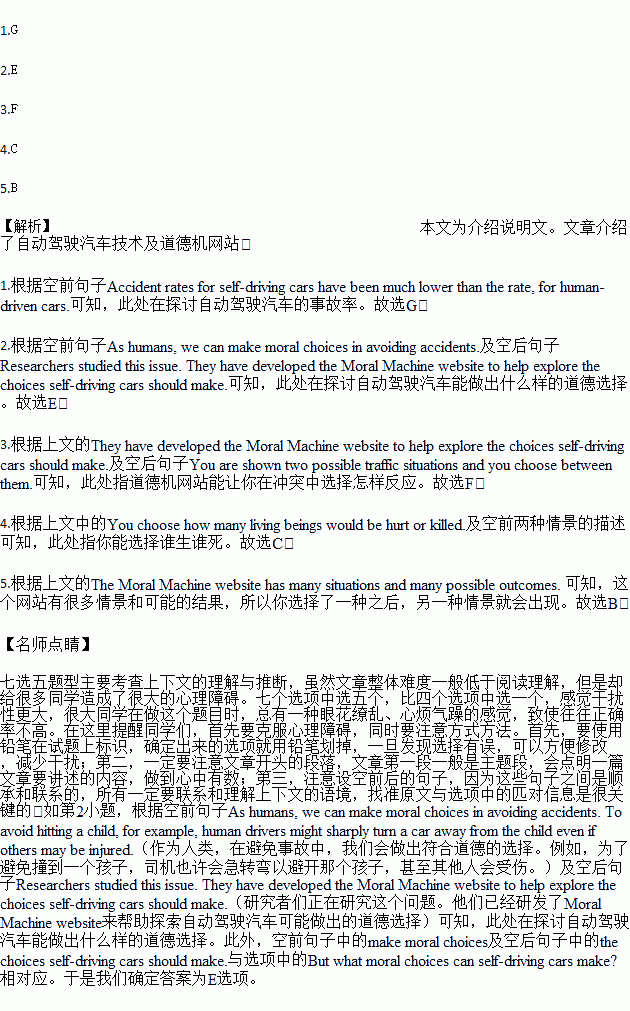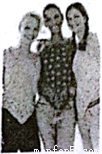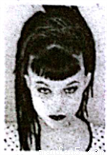题目内容
Every time we get behind the wheel of a car, we pt our lives and the lives of others at risk. Self-driving cars are designed to reduce those risks by letting technology control our vehicles.
Accident rates for self-driving cars have been much lower than the rate, for human-driven cars. 1.
As humans, we can make moral choices in avoiding accidents. To avoid hitting a child, for example, human drivers might sharply turn a car away from the child even if others may be injured. 2. Researchers studied this issue. They have developed the Moral Machine website to help explore the choices self-driving cars should make.
3. . You are shown two possible traffic situations and you choose between them. An accident will take place. You choose how many living beings would be hurt or killed.
In one situation there may be a female doctor, a child, two dogs and a homeless person who would be killed. In the other situation, you might have two babies and a cat who would be killed. 4.
The Moral Machine website has many situations and many possible outcomes. When you click on the situation of your choice, it will be highlighted. 5. At the end of the situation, you are shown the results, based on the choices you made. The results show which character you were most likely to save and which character you were most likely to have die.
A. Who should those victims be?
B. Then the next situation appears.
C. You choose who lives and who dies.
D. You can use the Moral Machine to be the judge.
E. But what moral choices can self-driving cars make?
F. The Moral Machine website lets you choose how you would react in a collision.
G. Google’s self-driving car has had only 13 collisions after traveling 1.8 million miles.
 名校课堂系列答案
名校课堂系列答案_______________.( )
| A. | Never mind | B. | That's right | C. | No problem | D. | Let's go |






